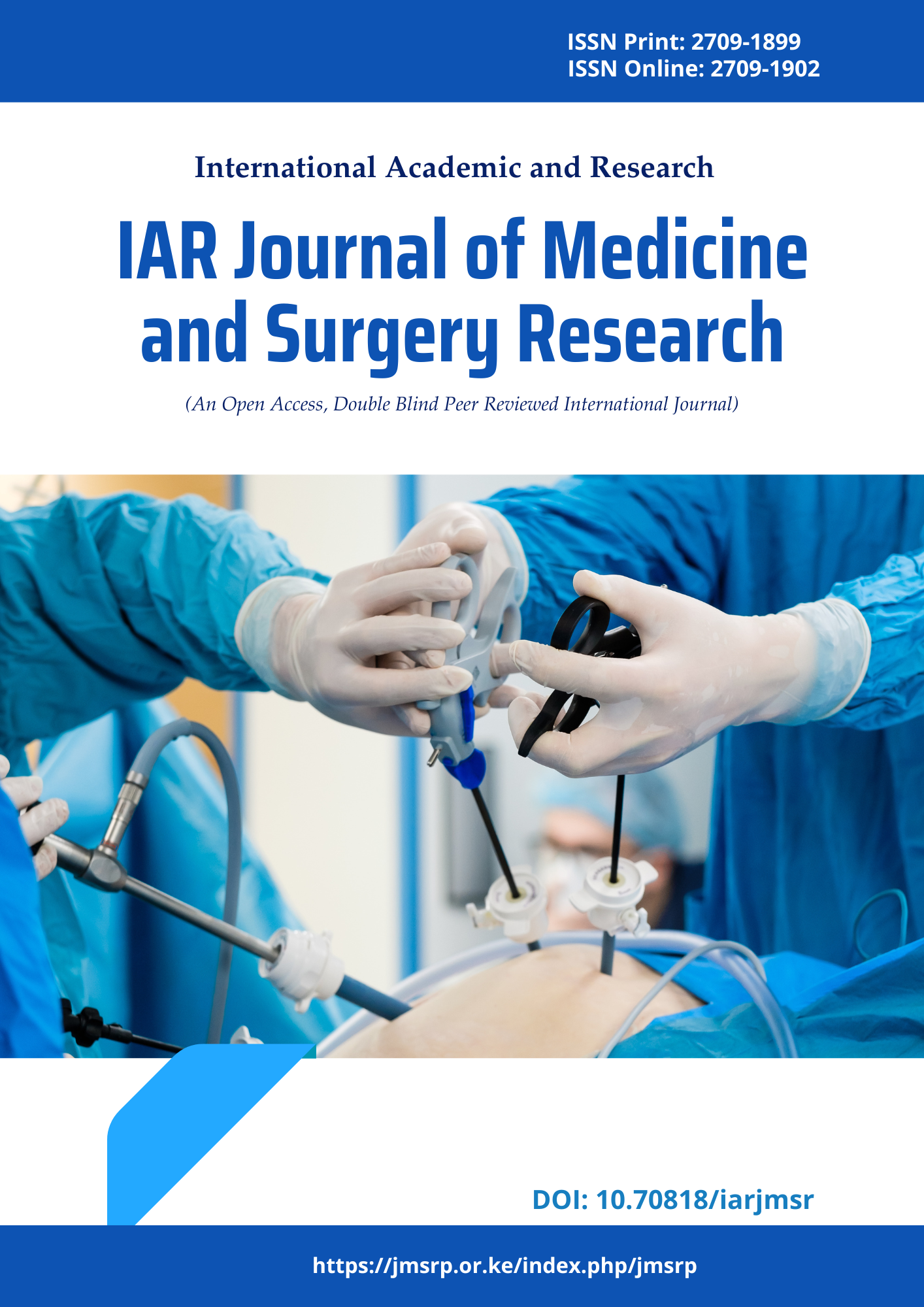Outcome of cardiorespiratory arrest in patients with respiratory diseases inemergency department: A prospective observational study
DOI:
https://doi.org/10.47310/iarjmsr.2022.V03i05.05Keywords:
Cardiopulmonary resuscitation, Cardiorespiratory arrest, Emergency departmentAbstract
Introduction: Cardiopulmonary arrest (CPA) is the cessation of effective ventilation and circulation. It is also known as cardiac arrest or circulatory arrest. In adults, it is most likely to be caused by a primary cardiac event. The most common electrical mechanism which is responsible for 50 to 80% of cardiopulmonary arrest is ventricular fibrillation (VF). The cardiopulmonary arrest could be reversed by two main interventions, i.e., early CPR and early automated external defibrillation (AED). Objective: To study the rate of survival to discharge after in-hospital cardiac arrest and its associated factors in an emergency department of a tertiary care hospital. Materials and Methods: This is a prospective and observational study was conducted in the Tertiary Care Teaching Hospital over a period of 1 year. It is a 700-bedded tertiary care referral hospital, located in Hyderabad, India, with an average of 100 emergency cases per day. Patients elder than 12 years, who have sustained cardiac arrest after reaching the ED but before being admitted into the specialty wards were included. Who suffered witnessed cardiac arrest, after arrival in the emergency department. A semi-structured questionnaire was used to collect data. Results: Of 60 patients, 15 (25%) were discharged fully conscious, whereas 45 (75%) patients died. Age, sex, comorbidities, and cause of arrest did not show any statistically significant association with the outcome (P>0.05 for all). The duration of CPR was significantly lower in survivors (3.80 ±1.90 min) compared with non survivors (10.31 ± 6.41 min) (P<0.001). GCS was significantly higher in survivors group compared with non-survival groups (11.38±0.3 vs 3.68±1.20, P<0.001). Conclusion: These results suggest that out-of-hospital cardiac arrest among patients has a very poor prognosis, especially when efforts at resuscitation continue for longer than 20 minutes and require more than two doses of epinephrine.
















